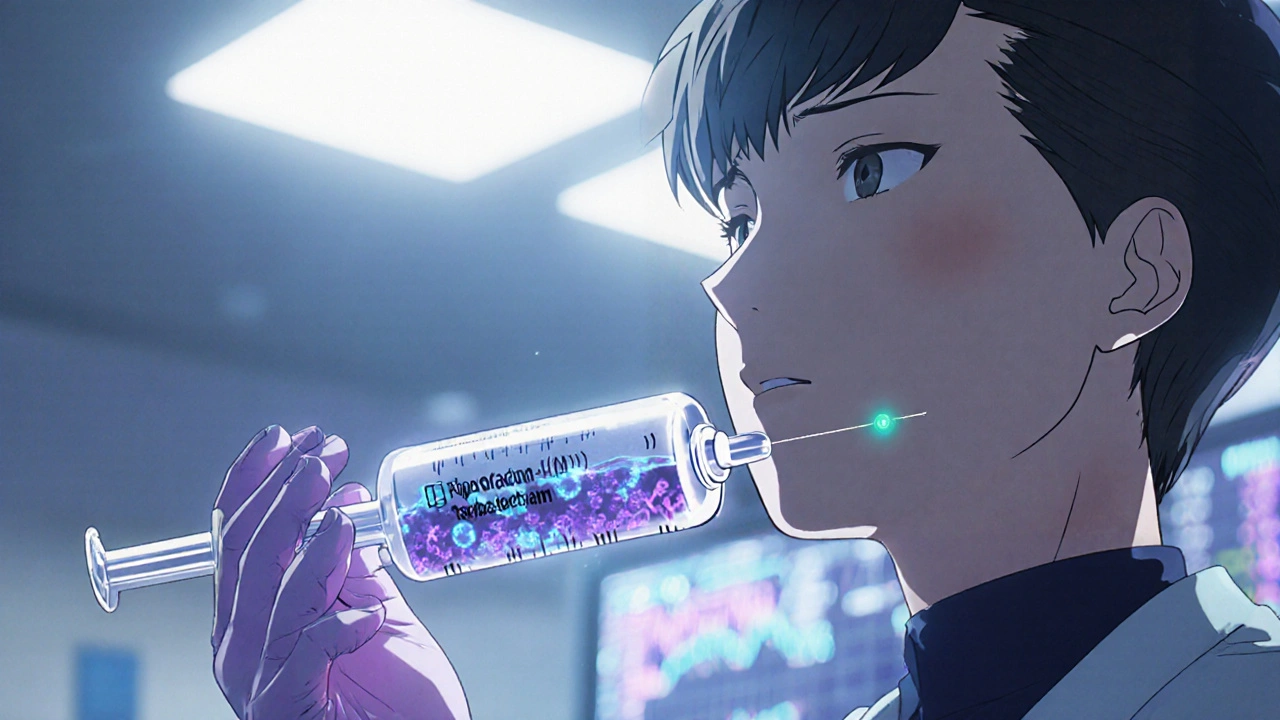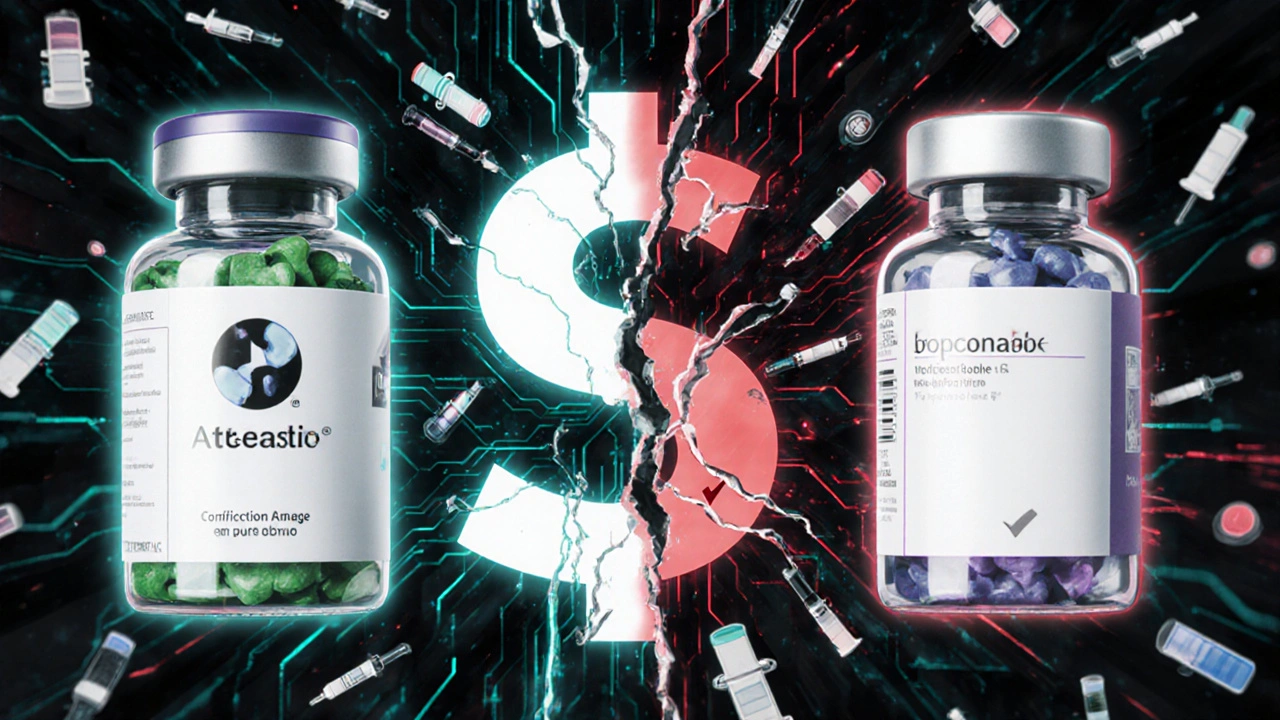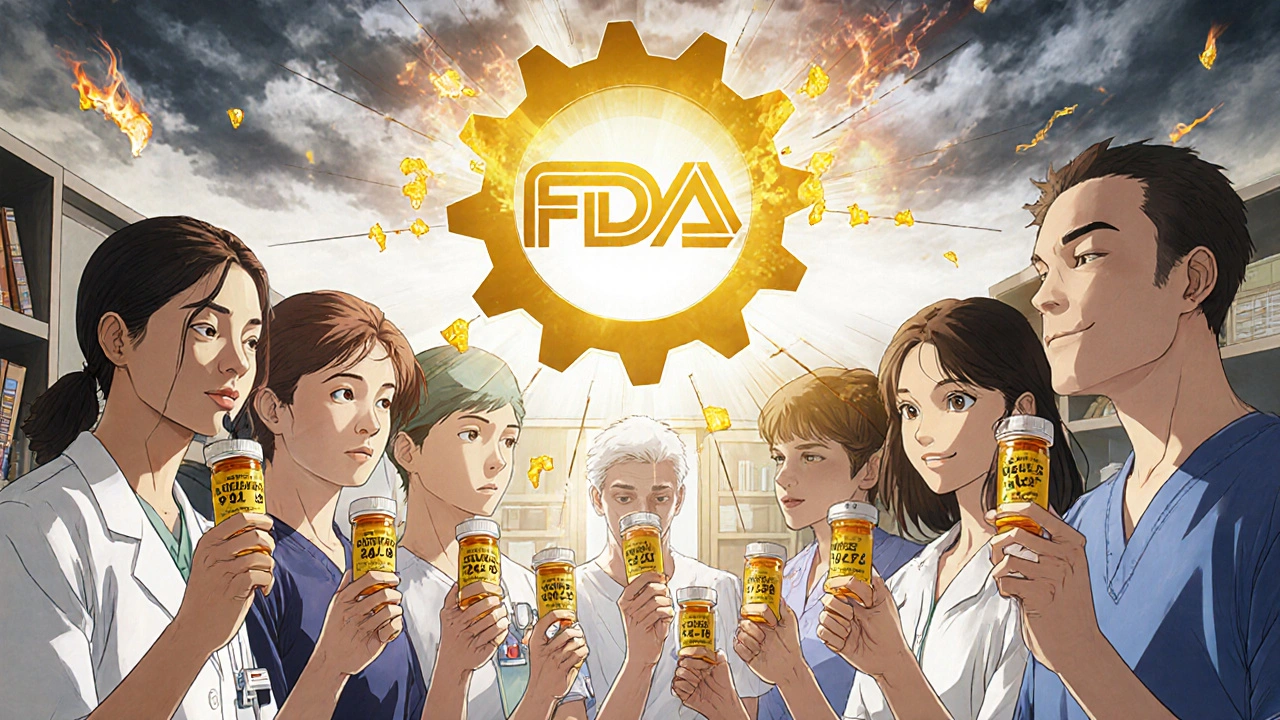
When you’re prescribed an antibiotic like piperacillin and tazobactam, you might not realize you’re getting a combination product-two drugs in one shot, designed to work better together than alone. These aren’t just random mixes. They’re carefully engineered to fight resistant bacteria, reduce treatment time, or make delivery easier. But here’s the real question: Can you get these same medicines cheaper? The answer is yes-and it’s changing how antibiotics are used across the U.S. healthcare system.
What Exactly Are Antibiotic Combination Products?
Antibiotic combination products aren’t just two pills in one bottle. They’re FDA-defined combination products, meaning they blend drugs, devices, or biological components into a single therapeutic unit. Think of it like a prefilled syringe with two antibiotics already mixed, or an inhaler delivering a drug-device combo for lung infections. The goal? Better effectiveness, fewer side effects, or simpler dosing for patients who need it most.One of the most common examples is piperacillin-tazobactam, used for serious hospital infections. Piperacillin kills bacteria, while tazobactam blocks the enzymes some bugs use to resist antibiotics. Together, they’re a powerhouse. Other combinations include amoxicillin-clavulanate (for sinus or ear infections) and ceftazidime-avibactam (for multi-drug resistant strains). These aren’t new-but what’s new is how many are now available as generics.
How Do Generic Versions Become Available?
Generic versions don’t just appear overnight. They enter through the Abbreviated New Drug Application (ANDA) pathway. That means a company doesn’t have to repeat expensive clinical trials. Instead, they prove their version is therapeutically equivalent to the brand-name product-same active ingredients, same strength, same way it works in the body.But here’s the catch: if the product includes a device-like a prefilled pen, auto-injector, or infusion pump-it becomes a generic drug-device combination product (g-DDCP). These are trickier. The FDA requires proof that the device works exactly the same way. If the needle is thicker, the plunger harder to push, or the label confusing, it could affect safety. That’s why manufacturers must submit detailed reports on every difference, from packaging to user interface.
The first major win came in 2010, when Hospira launched the first generic version of piperacillin-tazobactam injection. That opened the floodgates. Today, more than a dozen combination antibiotic products have generic versions on the market. And the savings? Massive. Between 2010 and 2020, generic drugs saved the U.S. healthcare system an estimated $2.2 trillion. Antibiotic combinations are a big part of that.
Do Generic Antibiotic Combinations Work as Well?
Yes-when they’re approved properly. The FDA doesn’t approve generics unless they meet strict standards for bioequivalence and therapeutic equivalence. That means your body absorbs and uses the generic version the same way it would the brand name.Studies show no difference in cure rates, side effects, or treatment failure between generic and brand-name antibiotic combinations. A 2021 study in Nature Communications tracked 13 antibiotics after generics entered the market. For most, patient outcomes stayed the same. That’s reassuring. But it also revealed something surprising: prescriptions didn’t always go up after generics arrived.
Take aztreonam. After its generic version launched, prescriptions jumped by over 400%. Why? Because a new inhalation therapy for cystic fibrosis came out around the same time, and doctors started using aztreonam more often as a prep treatment. Meanwhile, cefdinir prescriptions actually dropped. Not because the generic was worse-but because doctors switched to other options.
So, generic entry doesn’t guarantee more use. It depends on clinical needs, prescribing habits, and even coinciding treatments. The bottom line: the drugs work. But how they’re used? That’s more complex.

Why Aren’t More Generic Combinations Available?
You’d think once patents expire, generics flood the market. But that’s not always true for combination products. Here’s why:- Regulatory complexity: A drug-device combo needs review by the FDA’s Office of Combination Products (OCP). Which center leads the review? Drug? Device? It’s not always clear. That delays approvals.
- Cost and risk: Developing a generic version with a device is expensive. Manufacturers must prove every part of the delivery system is interchangeable. That’s not cheap.
- State laws: Many states only allow pharmacists to substitute generics for simple oral pills. They don’t have rules for prefilled syringes or inhalers. So even if a generic exists, a pharmacist might not be allowed to switch it without a new prescription.
Legal experts call this a “structural failure.” The laws were built for tablets and capsules. They don’t fit inhalers, pumps, or injectable combos. That creates confusion for patients, pharmacists, and doctors. You might get the right drug-but not the right delivery system.
Who Benefits the Most From Generic Antibiotic Combinations?
Patients do. But not always directly.When a generic version of a combination antibiotic hits the market, the price often drops by 30% to 80%. That means hospitals save millions. Insurance companies pay less. And patients? Their out-of-pocket costs shrink. That’s huge for people on fixed incomes or those needing long-term IV antibiotics.
Studies show lower costs lead to better adherence. If a patient can afford their meds, they’re more likely to finish the full course. That reduces the risk of antibiotic resistance-a growing global threat. In fact, the biggest win isn’t just saving money. It’s saving lives by making essential treatments accessible.
But access isn’t automatic. A patient in rural Alabama might get a generic version of ceftriaxone-avibactam. A patient in New York might not, because their state’s substitution law doesn’t cover injectable combos. That’s the reality: availability varies by location, pharmacy, and even the hospital’s formulary.

What’s Changing in 2025?
The FDA is paying attention. In September 2024, the agency held a major conference-REdI-focused on “Combination Products: Updates and Best Practices.” Experts agreed: the current system is outdated. They’re pushing for clearer guidelines, faster review pathways, and updated state laws.There’s also growing pressure from healthcare providers. Hospitals are demanding more generic options. Pharmacists are asking for clearer substitution rules. And patient advocacy groups are pushing for federal action to modernize substitution laws.
What’s next? Expect more generic antibiotic combinations-but slower than you’d hope. The FDA’s six-phase development approach for g-DDCPs is designed to make approval easier without cutting corners. But change moves fast in science and slow in regulation.
One thing’s certain: as more complex treatments emerge-like personalized antibiotic combos or smart inhalers-the need for smart, flexible regulations will only grow. The goal isn’t just to make cheaper drugs. It’s to make sure the right drug gets to the right patient, in the right way, every time.
What Should You Do If You’re Prescribed a Combination Antibiotic?
If your doctor prescribes a combination antibiotic:- Ask: “Is there a generic version?”
- Ask: “Does my insurance cover it?”
- Ask: “Can my pharmacy substitute it if needed?”
Don’t assume the brand name is better. Generics are safe, effective, and often far cheaper. If your pharmacy says they can’t substitute it, ask why. It might be a state law issue-not a safety one.
And if you’re on long-term therapy-like for cystic fibrosis or chronic infections-talk to your care team about switching to generic if available. The savings can add up to hundreds, even thousands, per year.
Are generic antibiotic combination products as effective as brand names?
Yes. The FDA requires generic combination products to prove therapeutic equivalence to the brand-name version. This means they deliver the same amount of active ingredients, work the same way in the body, and produce the same clinical results. Studies show no difference in cure rates, side effects, or treatment failure between approved generics and brand-name versions.
Why are some antibiotic combination generics not available even after patents expire?
Many antibiotic combinations include devices-like prefilled syringes or inhalers. These are harder and more expensive to replicate than simple pills. Manufacturers must prove every part of the device works identically to the original, which requires extensive testing. Some companies avoid the cost and risk, especially if the market is small. Regulatory delays and unclear FDA pathways also slow things down.
Can pharmacists substitute a generic antibiotic combination for a brand name?
It depends on your state. Most states allow substitution only for oral medications like pills or liquids. For injectables, inhalers, or device-based combinations, substitution laws often don’t apply. Even if a generic exists, a pharmacist may not be legally allowed to switch it without a new prescription from your doctor. Always check with your pharmacist or prescriber.
How much money can I save with a generic antibiotic combination?
Savings vary by product, but generic versions typically cost 30% to 80% less than brand names. For example, a single dose of branded piperacillin-tazobactam might cost $150, while the generic could be under $40. Over a 10-day course, that’s hundreds in savings. For patients on long-term therapy, the annual savings can reach thousands.
Do generic antibiotic combinations increase antibiotic resistance?
No. Generic versions are chemically identical to brand-name drugs and have the same mechanism of action. In fact, by making these treatments more affordable, generics help patients complete their full course of antibiotics-which is one of the best ways to prevent resistance. The real risk comes from overuse or incomplete treatment, not from using generics.
What’s the difference between a combination product and a co-packaged product?
A combination product is a single unit-like a pre-mixed injection or a prefilled inhaler. A co-packaged product is two separate items sold together, like a vial of antibiotic and a separate syringe. The FDA treats them differently. Combination products require a single approval under one application (ANDA). Co-packaged products may need separate approvals for each component, which can delay generic entry.
Final Thoughts
Generic antibiotic combination products aren’t just cheaper-they’re smarter. They make life-saving treatments accessible to more people, reduce financial strain on families and hospitals, and help fight the growing threat of antibiotic resistance. But their availability isn’t guaranteed. It depends on regulation, manufacturing choices, and outdated laws.If you or someone you care about relies on these medicines, ask questions. Push for generics. Know your rights. Because access to affordable antibiotics isn’t a luxury-it’s a necessity.

Adrian Rios
November 23, 2025 AT 13:51Man, I’ve been on IV antibiotics for six months straight thanks to a stubborn MRSA infection, and switching to generic piperacillin-tazobactam saved me over $8,000 a year. Not just in co-pays-my insurance dropped my tier from specialty to tier-two. I didn’t even notice a difference in how I felt. The nurse said the vials looked the same, the drip rate was identical, and the pharmacy didn’t even blink when they swapped it out. The real kicker? My hospital started stocking generics across the board after this. They said it freed up budget for more nurses. That’s not just saving money-that’s saving people.
Stop acting like generics are some kind of compromise. They’re the reason I’m still alive to complain about this stuff.
Also, if your pharmacist says they can’t substitute? Tell them to check the state’s formulary rules. Most of the time, it’s just ignorance-not law.
And yes, I know the device stuff is tricky. But if the needle’s thicker, I’d rather have a slightly harder push than a $200 dose.
Generic doesn’t mean cheap. It means accessible. And that’s not a bug. It’s the whole damn point.
Casper van Hoof
November 24, 2025 AT 20:34The philosophical underpinning of generic pharmaceuticals reveals a tension between commodification and therapeutic integrity. While the utilitarian calculus of cost reduction is undeniably compelling, one must interrogate whether the reduction of complex biological interventions to interchangeable units risks eroding the epistemological foundation of clinical trust. The FDA’s therapeutic equivalence standard, though rigorous, operates within a mechanistic paradigm that may not fully account for the phenomenological experience of drug delivery-particularly when devices are involved. Is bioequivalence sufficient when the tactile feedback of an auto-injector alters patient compliance? One is compelled to ask: in reducing cost, have we inadvertently reduced care?
Richard Wöhrl
November 25, 2025 AT 06:18Okay, but… have you ever actually held a generic version of ceftazidime-avibactam? I work in a hospital pharmacy. We switched last year. The device? Identical. The plunger? Same resistance. The label? Even better-bigger font, clearer instructions. The vial? Same color, same cap, same barcode. And yes, we tested it: blood levels, peak concentrations, time to effect-everything matched. Patients didn’t notice a difference. Nurses didn’t notice a difference. The only difference? Our budget went from ‘struggling’ to ‘we can afford to treat 12 more sepsis cases this month.’
Look, I get that philosophy is fun. But when someone’s on a ventilator because their kidney infection didn’t respond, they don’t care if the drug was ‘commodified.’ They care that it worked. And it did. Every time.
Also-state laws are outdated. That’s not philosophy. That’s bureaucracy. Fix the law, not the science.